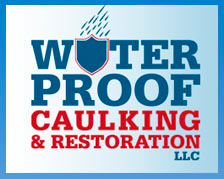Tile is a great way to keep your bathroom and other tiled areas, protected from water damage and looking great, without spending too much money in the process. However, tile should ideally be replaced every eight to ten years to prevent a dated look or an increased risk of water damage.
How To Remove Tile From A Wall
The good news is that removing tile from your walls is often a project DIY building owners can complete without professional assistance (although larger projects may require a professional).
The following is a complete guide on how to remove tile from your walls, including the tools you will need and safety precautions to follow.
Tools Needed & Safety Precautions
Tile removal will be difficult without the right tools. Be sure to take time before you begin to round up and organize your tools. This can prevent having to stop in the middle of the tile removal project because you forgot a tool that you need. The main tools you will need include:
- Utility knife or rotary grinder
- Heat gun or blow dryer (optional)
- Hammer or mallet
- Putty knife
Keep in mind, you will be working with sharp and dangerous tools. Make sure to wear protective gear that includes a face mask, work gloves, boots, safety goggles and long pants and sleeves. Practice caution while hammering, working with blades or using heat to prevent injury.
Chisel At Grout Around Tile
The best way to remove tile is by chipping away the grout that holds it into place. This ensures the tile does not break in the removal process, which makes removal more challenging. The grout should chip away without much effort. If it does not come off easily, you may need to heat the grout first.
You can use a special tool or utility knife to chisel at the grout. A faster method is to use a rotary grinder, although this may increase the risk of damaging the other tiles. You can chisel the grout by running the utility knife across it, ensuring you chisel the grout on all sides of each tile. If you use a rotary grinder, set it on the lowest power setting and make sure you have full control of it while chiseling the grout.
Heat Grout If Difficult To Remove
You do not typically need to heat grout before removing it. However, taking the time to heat the grout before you chisel can make the process easier. To do so, you will need either a heat gun or a blow dryer. Heat all areas of the grout for 30 seconds to one minute. This should loosen up hard grout.
You should not have to work hard to remove grout. If the grout does not come away easily with a utility knife or a rotary grinder, then stop and heat the grout before you continue.
Apply Pressure On Loose Tiles
Loose tiles are easier to remove from the wall than tiles that are secure. Additionally, the first tile you remove will most likely be the most difficult. When getting started, try and locate a loose tile and remove it first. You can remove the loose tiles by chiseling away with a utility knife or rotary grinder, as mentioned above.
If your tiles are well-intact and supported by mortar, chiseling the grout may not work. If you come across tiles that cannot be removed, you may need to bust up the tile with a hammer or mallet, although it is best to avoid this strategy if at all possible.
Scrape Leftover Adhesive Material
Many wall tiles are supported by adhesive materials. After you remove all of the tiles from the wall, you will likely need to scrape away the adhesive materials. You can scrape away the adhesive material with a putty knife or chisel it away with a utility knife. Be sure to remove all adhesive materials so that the wall is even.
It is important to remove all leftover materials after tile removal to ensure the new wall tile (or other material) can go on properly. Otherwise, the application of the new tile may become more challenging or the new tile may appear uneven. While the wall is bare, you can also use the opportunity to clean it. You can clean the wall with soap and water, and be sure to allow enough time for the wall to dry before applying any new tile.
Call The Experienced Commercial Waterproofing Company
Here at Waterproof Caulking & Restoration LLC., we help those in our local community with their building’s commercial waterproofing needs. Give us a call today at 484.265.9646 to learn more about our waterproofing service and the benefits waterproof caulking offers or schedule a consultation online. We have a friendly and professional team always ready to assist, and we can answer your questions and help you decide if professional waterproofing services for your property is right for you.
